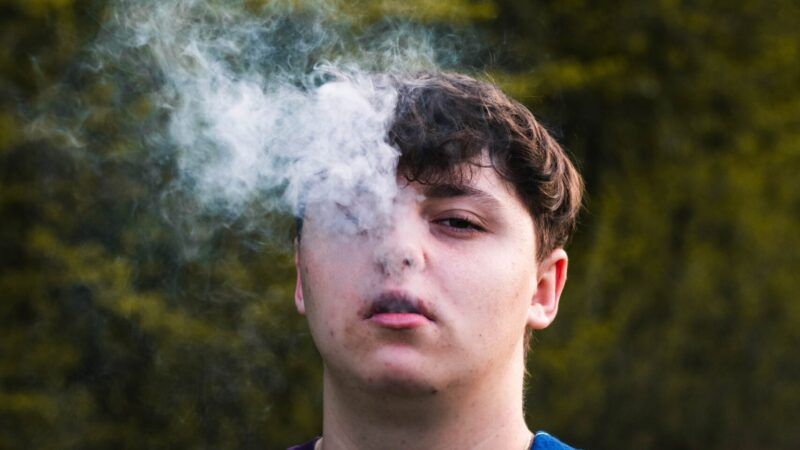Youth Smoking Nears Zero
But Biden still wants to ban menthols to protect kids.

New data from the Centers for Disease Control and Prevention (CDC) show youth smoking at a historic low, with just 1.9 percent of high schoolers lighting up in the past month. Youth vaping is also at its lowest level in a decade at 10 percent, and cigar use is down to 1.8 percent from 2.8 percent the previous year.
That's good news from a public health standpoint, but the data raise questions regarding the Biden administration's plan to ban menthol cigarettes and flavored cigars. A key argument for prohibition is that menthol cigarettes and flavored cigars appeal to youth, especially black youth, and banning them is essential to prevent future generations of addiction and outweighs the risks of illicit markets that are certain to follow. But the CDC data show that smoking rates among black high schoolers are so low they can't be reliably calculated.
A smoke-free society is typically defined as one where cigarette smoking is below 5 percent of the population. Applying this standard to youth, the U.S. has achieved a smoke-free generation. With youth smoking all but eliminated, it's hard to see menthol prohibition as anything other than an attempt to target adult consumers, particularly black smokers who are more likely to choose a menthol product.
Kids may have ditched cigarettes, but there are millions of adults who still use menthol cigarettes. Experiments in menthol prohibition in the European Union, Canada, and even Massachusetts aren't promising examples for the United States. A study of the effect of menthol prohibition in Poland, which had the highest menthol consumption in the E.U. at almost a third of the cigarette market, found no statistically significant change in cigarette consumption after the ban. Canada, which had a far smaller share of menthol smokers at 11 percent of the population, did see 21.5 percent of menthol smokers quit after the ban was imposed. However, 19.5 percent of menthol smokers continued to source their preferred cigarettes through other channels, and 59 percent just switched to nonmenthol cigarettes. Massachusetts became the first state to ban all flavored tobacco products. The ban was a boon to neighboring states like New Hampshire and Rhode Island, which enjoyed a surge in cigarette sales. Massachusetts lost $116 million in cigarette tax revenue in the first 12 months of the ban, according to the Tax Foundation.
The Food and Drug Administration downplays the risks of the illicit market for menthol and flavored cigars, arguing the FDA is only banning the sale, manufacture, and distribution, not individual use. These defenses ring hollow as Eric Garner was killed in 2014 during a confrontation with New York City police over selling untaxed cigarettes. The Volstead Act, which instituted national alcohol prohibition, also didn't ban individuals from consuming alcohol, but the results were disastrous all the same.
Last year, the mothers of Garner and Trayvon Martin, as well as the brother of George Floyd, urged the Biden administration to abandon its plans for a menthol ban. The American Civil Liberties Union and a host of criminal justice organizations have also been outspoken in their opposition to menthol prohibition, fearing that law enforcement responses for controlling the illicit market will be disproportionately concentrated on black communities.
In July, Sens. Marco Rubio (R–Fla.), Bill Cassidy (R–La.), Ted Budd (R–N.C.), and Bill Hagerty (R–Tenn.) wrote to FDA Commissioner Robert Califf expressing concern over the ban, arguing prohibition would enrich Mexican transnational criminal organizations who will seize the opportunity for a new profit center through trafficking flavored tobacco products.
The FDA's rule banning menthol cigarettes currently sits with the White House Office of Management and Budget for review and could be finalized before the end of the month. With the advent of safer alternatives to cigarettes, like vaping, and youth smoking at generational lows, the justification for embarking on a new era of prohibition looks more tenuous than ever.



Show Comments (43)